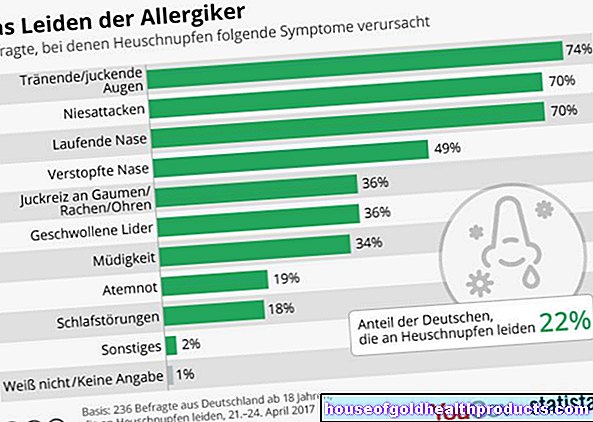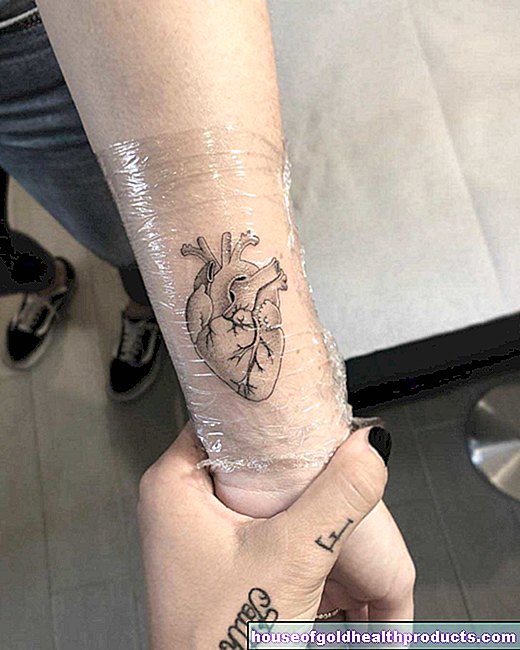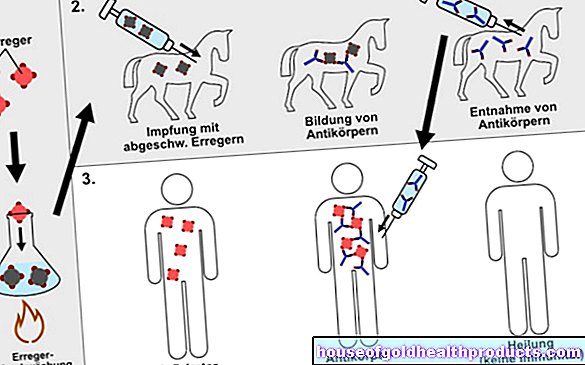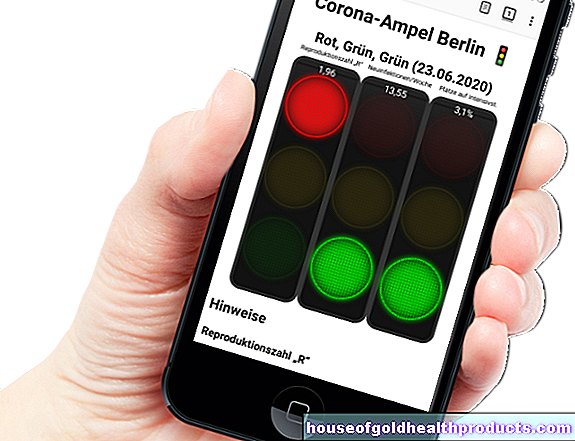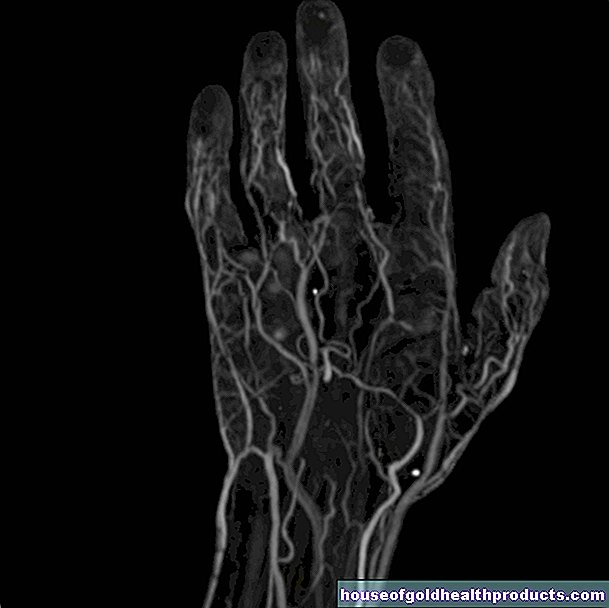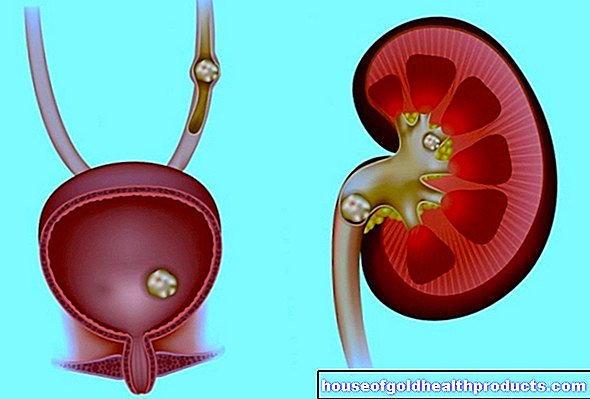Pain medication - over the counter
All content is checked by medical journalists.Over-the-counter pain medication can relieve mild pain, such as tooth, head, muscle, or joint pain. They are available in the form of local preparations (e.g. pain ointment) and for ingestion (e.g. as tablets). Don't use over-the-counter pain relievers lightly. In addition, you should always consult a doctor if the pain persists or is severe. Read more about over-the-counter pain medication here!

Many pain relievers belong to the group of nonsteroidal anti-inflammatory drugs (NSAIDs, NSAIDs). They reduce the production of messenger substances (e.g. prostaglandins) that are responsible for pain and inflammatory reactions. Some of these drugs are available in low doses from pharmacies without a prescription, for example the active ingredients ibuprofen or diclofenac. However, they should only be used for a short time and only in the specified dose. Typical side effects of internal use include gastrointestinal complaints.
There are also herbal remedies (phytotherapeutic agents) which, for example in the form of capsules or ointments, can relieve mild pain such as joint and muscle pain and inhibit inflammation. However, some of them can cause side effects similar to chemical preparations.
Whether chemical or herbal pain relievers - let your doctor or pharmacist advise you on the selection and use and read the package insert in advance!
Systemic - local
In the case of painkillers that are used internally (e.g. swallowed), the active ingredient is distributed throughout the body. Doctors call this mode of action "systemic". Even when a plaster is used, for example a pain plaster for severe pain, has a systemic effect because the active ingredients are absorbed into the blood through the skin and can then reach all parts of the body.
On the other hand, externally applied painkillers only have a local effect. For example, a pain ointment that is rubbed into a painful joint.
Well-known pain medication
The following table shows examples of over-the-counter, chemical and herbal pain relievers:
| Active ingredient | Dosage forms | effect |
| Acetylsalicylic acid (ASA) | e.g. tablet, solution, ointment | Pain reliever, antipyretic, anti-inflammatory; increases the fluidity of the blood |
| Diclofenac | e.g. tablet, suppository, gel, plaster, cream | Pain relieving, anti-inflammatory, decongestant, antipyretic |
| Flufenamic acid | e.g. ointment | Pain relieving, anti-inflammatory |
| Ibuprofen | e.g. tablet, suppository, gel, ointment | Pain-relieving, anti-inflammatory, antipyretic, decongestant |
| Ketoprofen | e.g. tablet, capsule, gel, suppository | Pain relieving, anti-inflammatory |
| Naproxen | e.g. tablets, suppositories | Pain relieving, anti-inflammatory, antipyretic |
| Paracetamol | e.g. tablet, solution, suppository | Pain-relieving, antipyretic, weakly anti-inflammatory |
| Herbal pain relievers | ||
| arnica | Ointment, gel, tincture | Pain-relieving, blood circulation-enhancing, anti-inflammatory, decongestant |
| Comfrey | Gel, ointment | Pain-relieving, anti-inflammatory, decongestant, blood circulation-enhancing, warming |
| Capsaicin | Ointment, plaster | Promotes blood circulation, warming |
| Fighter | ointment | Pain-relieving, calming, stimulating blood circulation |
| Butterbur | capsule | Pain relieving |
| Devil's claw | Tablet, capsule, solution, tea | Pain relieving, anti-inflammatory |
| Willow bark | Tablets, solution, tea | Pain-relieving, fever-reducing, anti-inflammatory, diaphoretic |
Technical Advisory Board: Dr. Thomas Wieser, specialist in neurology in Vienna and pain therapist
Tags: stress parasites dental care










